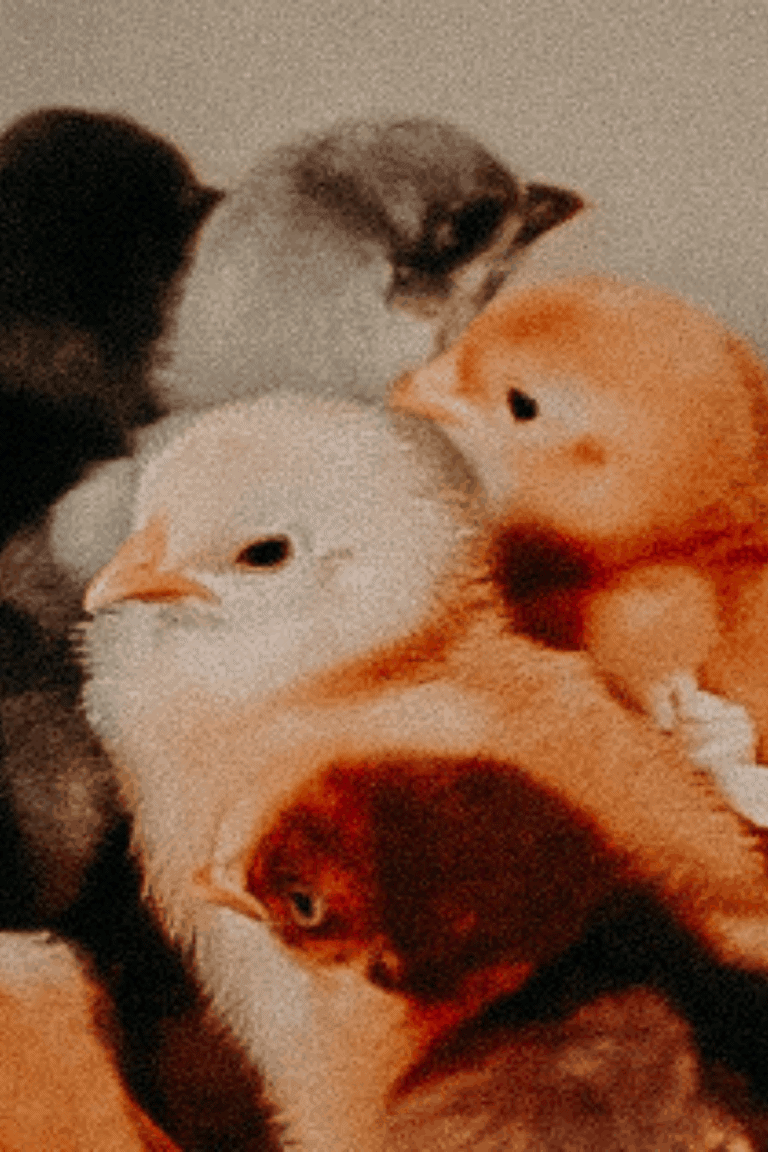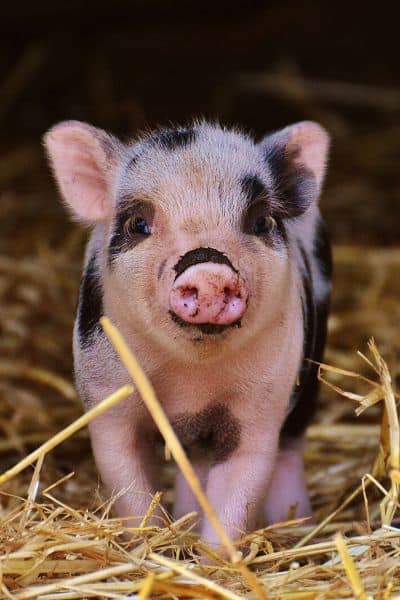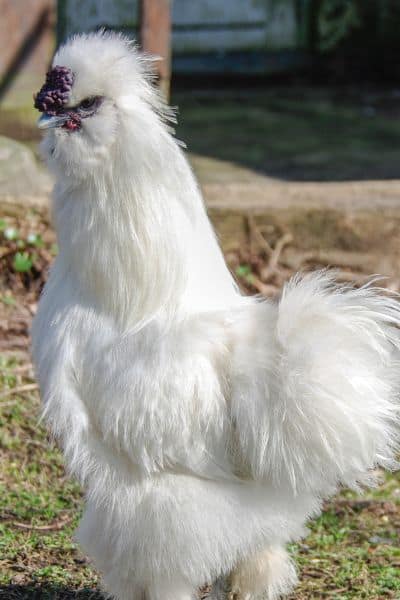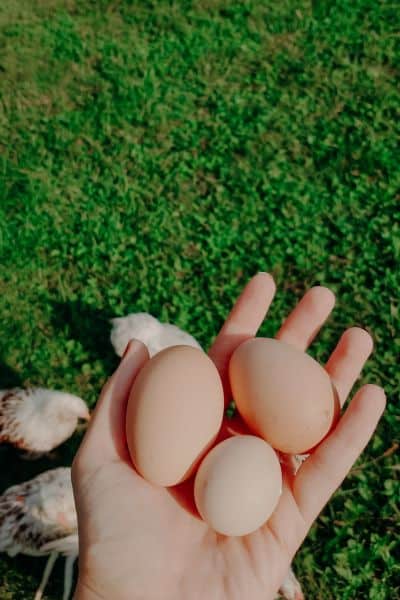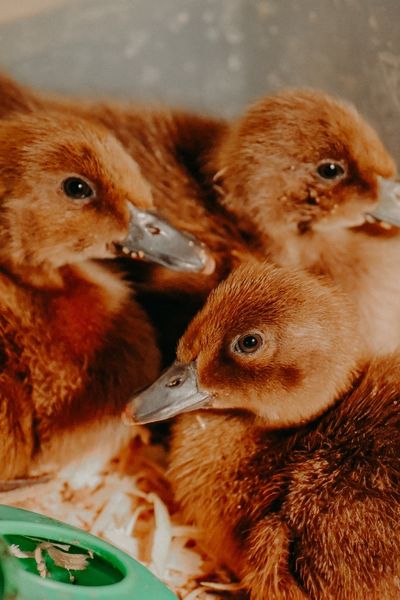10 + Awesome Herbs To Grow For Beginners
Before I share what the best herbs to grow for beginners are. You need to figure out what you want to use these herbs for. Do you want them for cooking only? Or maybe crafts and medicinal purposes.
There are so many herbs out there and knowing your herb growing goals will help you decide which herbs are the best to grow for you.
Start with just a few herbs and add them as you learn how each herb does with your location.
Free Farm Goal Planner!!!
➡️Get my proven system for choosing your farm goals so you don’t get burnt out.
Find Your Gardening zone
It’s not hard to do. Just google your state + gardening zone. You may need to add a large city that is close to you. If you are in a state like Ohio the northern part of the state is very different from the southern half.
Knowing what will grow in your area will really help you decide what herbs to grow.
Choose The Best Herbs To Grow For Your Zone
The United States is (and all of the world really) divided into zones. These indicate the hardiness necessary for plants to thrive. There are 11 zones in the U.S., each with a difference of about 10 degrees from its neighbor. So, a plant that is hardy in Zone 2 up in Michigan will die a thousand deaths in Zone 7 in Texas. It simply can’t take the heat.
Similarly, a plant that is hardy in Zone 7, withstanding occasional freezes below 0, won’t stand a chance in Zone 2. Trust the Zone. Feel the Zone. Honor the Zone, or plan for even perennial plants to die.
Figure Out What Space You Have
You can grow herbs in containers or in the ground.
You can also grow some herbs in a window indoors BUT you have to be in a state that gets ALOT of sun. In Ohio, they just get long and scraggly even in the height of summer.
There are a lot of herbs that are annuals. In that case, I don’t want to waste ground space on herbs that don’t come back the following year.
Take the time to think through what herbs you want to grow and the space you have to grow them in for max capacity.

Best Herbs To Grow For Beginners
Like I said there are TONS of herbs out there. These are the ones that will be the most common and are the best herbs to grow for beginners.
How to Grow Basil
Basil is an annual plant and needs full sun and well-drained soil. You can sow Basil outside and this is what I would personally recommend. Herbs in general are harder to start indoors. Maybe that is just a northern states thing.
I will sow basil directly in a hanging basket and it does extremely well.
Once nighttime temperatures remain above 50 degrees F then basil can be transplanted outside.
When I plant the seeds I sprinkle the appropriate number in the pot and used a gardening hand shovel to lightly turn over the dirt.
If you want specifics plant basil seeds 10inches apart and 1/3 of an inch deep. The soil should be kept moist and watered frequently.
After the plant reaches 7inches cut off the growing tip, stop the plant from growing any higher and increase growth to the sides making it bushier. Giving the plant more area to produce and increase its harvest Harvest can be done depending on your needs, picking fewer leaves more frequently will encourage the plant to produce even more. Up until the end of the season (before the first frost), cut off all stems and harvest all leaves, afterward you can either freeze or dry them for later use.
Source: farmityourself.com
Basil is one of the best herbs to grow for beginners because it is virtually foolproof. Start it outdoors and see how it goes.
Here is a nut-free pesto recipe from Katie Workman. This a quick and easy way to preserve all the basil you can.
How To Grow Chives
Chives is a cold-weather perennial plant, requires full sun and well-drained rich loamy soil, but can make do with most other soils. Chives can easily be grown from seeds in spring but giving it a headstart by growing seedlings 6 weeks before the last frost, is advised.
Plant Chives seeds/seedlings 8inches (20cm) apart and 1/3 of an inch (0.75cm) deep. Water frequently after planting, during the summer lots of water is required otherwise Chives will start to wilt.
To keep watering more consistent consider adding mulch, this will also reduce the number of weeds, and will hopefully prevent random weeds to grow in your Chives
Chives can be harvested according to your needs as soon as 60 days after transplanting, by cutting off a bunch of leaves close to the soil. Leaves without any flowers generally taste better, they are, however, edible and can be used as decoration on salads.
Chives can easily be stored by freezing and used throughout the year, without loose any taste. If you want your Chives to spread stop harvesting 3 weeks before the first frost and allow the plant to flower.
Source: farmityourself.com
How To Grow Cilantro
Cilantro is an annual plant, best grown in full sun, but can tolerate partial shade and in well-drained moist soil. Cilantro can easily be planted directly from seeds, it grows really fast and doesn’t really need a headstart.
Plant Cilantro seeds in rows about 1 foot(30cm) apart and 1/4inch (0.6cm) deep. Between the plants, 6inches (15cm) will suffice. Cilantro grows very fast and should be planted in succession (Planting multiple times with 1-2 weeks time in-between). Once the weather gets hotter Cilantro will produce seeds, after which the plant will degrade quickly.
Cilantro will self-sow if you allow it to, making it a great recurring addition to your garden.
Harvest leaves can be harvested as you need them. To increase harvest pinch portions of the upper stem, but flowers, seeds, and leaves can be eaten. To store cilantro freezing is the best option to keep them tasteful.
Source: farmityourself.com
How To Grow Dill
Dill is an annual Plant, best grown in full sun and in a well-drained loamy soil. Dill can easily be planted directly from seeds, it grows really fast and doesn’t like to be transplanted.
Plant Dill seeds 18inches(45cm) apart and 1/4inch (0.6cm) deep. Temperatures of the soil must excide 60°F(16°C) for the best result, so sowing should be done in mid-spring.
Dill will self-sow if you allow it to, making it a great recurring addition to your garden.
Dill can be harvested whenever you need it and can be used in its entirety. Flowers are good to flavor stews and are used like Bay leaves, similarly, the seeds are most commonly used to flavor pickles, bread, fish, and vegetables.
Dill can be both dried and frozen for later use and generally keeps most of its taste. That being said frozen dill tends to be a bit more aromatic compared to the dried option.
How To Grow Mint
Oh mercy, mint is definitely one of the best herbs to grow for beginners if you love having a high reward for your efforts. But be careful. Mint is extremely invasive and will take over any spot you give it. Plant it in a container or in an area that will be out of the way and you are fine with the plant doing its own thing.
Mint is a perennial and does best in full sun but I have seen it grow in part shade as well.
Mint is pretty tolerant to almost all soil conditions but prefers well-drained light soil. Mint can easily be grown from cuttings in spring, after the last frost.
Plant Mint cuttings <20inches (50cm) apart and deep enough to establish roots. Water frequently after planting, but once the plant is established allow the soil to almost go dry, then water thoroughly.
Mint can be harvested frequently (even on a daily basis), while young leaves have more flavor than older ones. Mint can also be dried or frozen and used later.
Harvest them before they start flowering, leaving behind 1-1.5inches of the stem. This ensures multiple harvests during one growing season.
Source: farmityourself.com
How To Grow Oregano
Oregano (like mint) is pretty invasive as well. Plant it in a contained area with root guards or be ok with pulling growth out to keep it contained.
Oregano is a perennial plant, requires full sun (or partial shade), and is pretty tolerant to almost all soil conditions, but prefers well-drained light soil. Oregano can easily be grown from seed or cuttings in spring, after the last frost.
Plant Oregano seedling/cuttings/seeds 10inches (25cm) apart and 1/3inch(0.75cm)deep. Water frequently after planting, but once the plant is established allow the soil to almost go dry, then water thoroughly.
Ground temperature should be around 70°F(21°C) when planting, to ensure optimal growth.
Oregano is best harvested before flowering. Flowers should be pinched to prevent bolting, also encouraging the plant to grow bushier.
To harvest Oregano, choose a stem bigger than 5inches(12cm) and run your finger along the stem to pick off all the leaves. Afterward cut of the now-empty stem, so that a new one will grow.
Alternatively, you can also let your Oregano grow larger and only cut off the top parts of the stem. The leaves can be both dried and frozen for later uses
Source: farmityourself.com
How to Grow Parsley
Parsley is a biennial plant (having a 2-year life cycle), requires full sun (or partial shade) and moist rich soil. Parsley grows rather slow, it’s best to prepare seedling 10-12 weeks before the last frost. When grown from seed it’s best to plant them 4 weeks before the last frost (they can tolerate low temperatures).
Plant Parsley 8inches (20cm) apart and 1/3inch(0.75cm)deep in a rather weed-free place. Water frequently after planting, once the plant is established water evenly, parsley likes moist soil but can survive in dry conditions.
Being a biennial plant harvesting parsley is a little bit different than normal, you harvest the leaves during the first year (try to mainly harvest the other leaves).
In the second year, you can let the Parsley flower and harvest its seeds as well as its roots (in fall). Parsley can be frozen and dried for later usage both leaves and stems are good for flavoring, but the stems are more intensive.
Source: farmityourself.com
Pin The Best Herbs To Grow For Beginners Post To Save It For Later

How to Grow Rosemary
Rosemary is a woody perennial, which requires full sun and well-drained light soil. Rosemary should be sown inside around 8-10 weeks before the last frost. Once Soil temperatures rise to 70°F Rosemary can be transplanted.
Make sure your Rosemary has enough space to expand. Rosemary will get around 4feet(1.2m)high and wide, so you will most likely never need a second plant. Water the plant evenly but be careful not to overwater it.
It’s important to prune a rosemary bush in spring after flowering, to improve growth and help the plant to remain in good shape.
Harvest here is pretty simple, take what you need. Make sure to leave about 2/3 of the plant if you harvest in bulk. To make Rosemary storable simply dry it, this way you can add it to your meals all year round.
Source: farmityourself.com
Rosemary has some wonderful uses when it comes to caring for rabbits. Read more about how to use rosemary in the rabbitry.
How to Grow Sage
Sage is a woody, perennial plant, which requires full sun and well-drained light soil. Sage is best started from a small plant either bought in a store or by using cuttings 1-2 weeks before the last frost. Once roots start to emerge transplant into a small pot so the root ball can develop, then you can transplant it into your garden.
Make sure your Sage has enough space to expand. This plant will grow to around 1feet(30cm)high and 4feet(1.2m) wide, so you will most likely never need a second plant. Water the plant evenly but be careful not to overwater it.
Pruning of the heavier stems should be considered each spring. Especially if you don’t want to replace your Sage plant every 5 years.
In the first year harvest only a small amount, so the Sage can establish itself, afterwards, you can go ahead and harvest to your heart’s content. Sage has a very strong aroma, and opposite to most other herbs will get more intensive, the older the leaves get.
Once or twice a year have a larger harvest only leaving about have the plant, you can also use this opportunity to cut the shrub back into shape and encourage growth. Stop harvesting in fall, and let the plant prepare for winter. Sage can be both dried and frozen for later use.
Source: farmityourself.com
How to Grow Thyme
Thyme is a perennial which requires full sun and well-drained light soil. Thyme is best started from a small plant either bought in a store or by using cuttings. Thyme grows upwards, then falls over and roots itself. So it makes a great ground cover plant.
Plant Thyme cuttings about 2 feet apart and 1/5inch deep. Water frequently after planting, and thoroughly after the plant is established only if the soil feels dry.
Can be harvested depending on your needs, and tastes the best right before flowering. In the first year do one mass harvest towards the end of its season, the next year you can harvest Thyme multiple times.
Thyme is great to dry and freeze and will keep its aroma similar to sage. Regular Pruning is also advised to improve production and keep your plant in shape.
Source: farmityourself.com

Plant Terminaigy For Beginners
Perennial
Perennial plants are those that come back every single year. Plants like anise hyssop and bee balm are colorful, perennial herbs that have a wonderful scent and is used in many emulsions and infusions.
Perennials come back from the root every year so that you do not have to replant. They will go dormant in the winter. Other perennial herbs are fennel, bay, chives, lemon balm, oregano, thyme, mints, and sage.
Annuals.
Annual plants need to be planted every year. You may plant them from seeds yourself, or you may want to buy seedlings and set them out. These include such herbs as basil, cilantro, cress, and marjoram.
Self-Seeding Annuals.
These plants usually make their own seeds after flowering each year. They may replant themselves in the same spot every year if you let the flowers go to seed. The seeds will fall around the existing plants and can sprout the following spring.
Herb Harvesting Tools
Herb Scissors Set With 5 Blades And Cover – See On Amazon
I have these and they are ssssssoooooo awesome for the herbs with large leaves. You get all of the herbs in the dish and not smushed on the cutting board.
KYQEE Leaf Herb Stripper, 2 in 1 Kitchen Herbs Stripper Tool, 9 Holes, Stainless Steel Herb Cutter with Safety Cover – See On Amazon
These are great for really small herbs like thyme.
COSORI Food Dehydrator (50 Recipes) for Jerky Meat Herbs Fruit, Dryer Machine with Digital Temperature, 6 Stainless Steel Trays, CP267-FD, Black – See On Amazon
This one has a five-star average rating and I think something like this would be more efficient at drying herbs and do a better job. I have a circular dehydrator and it takes quite a while to dry herbs.
